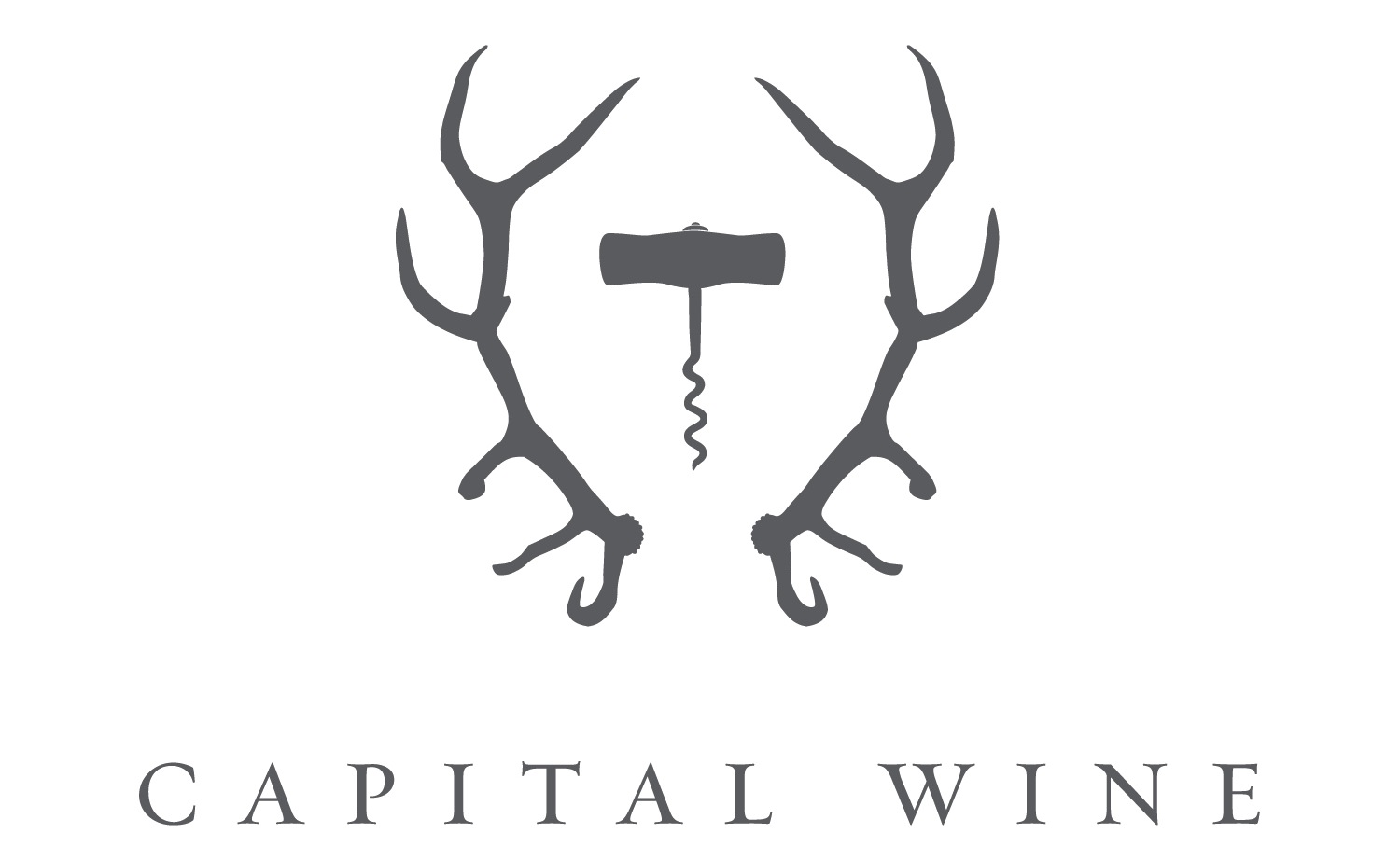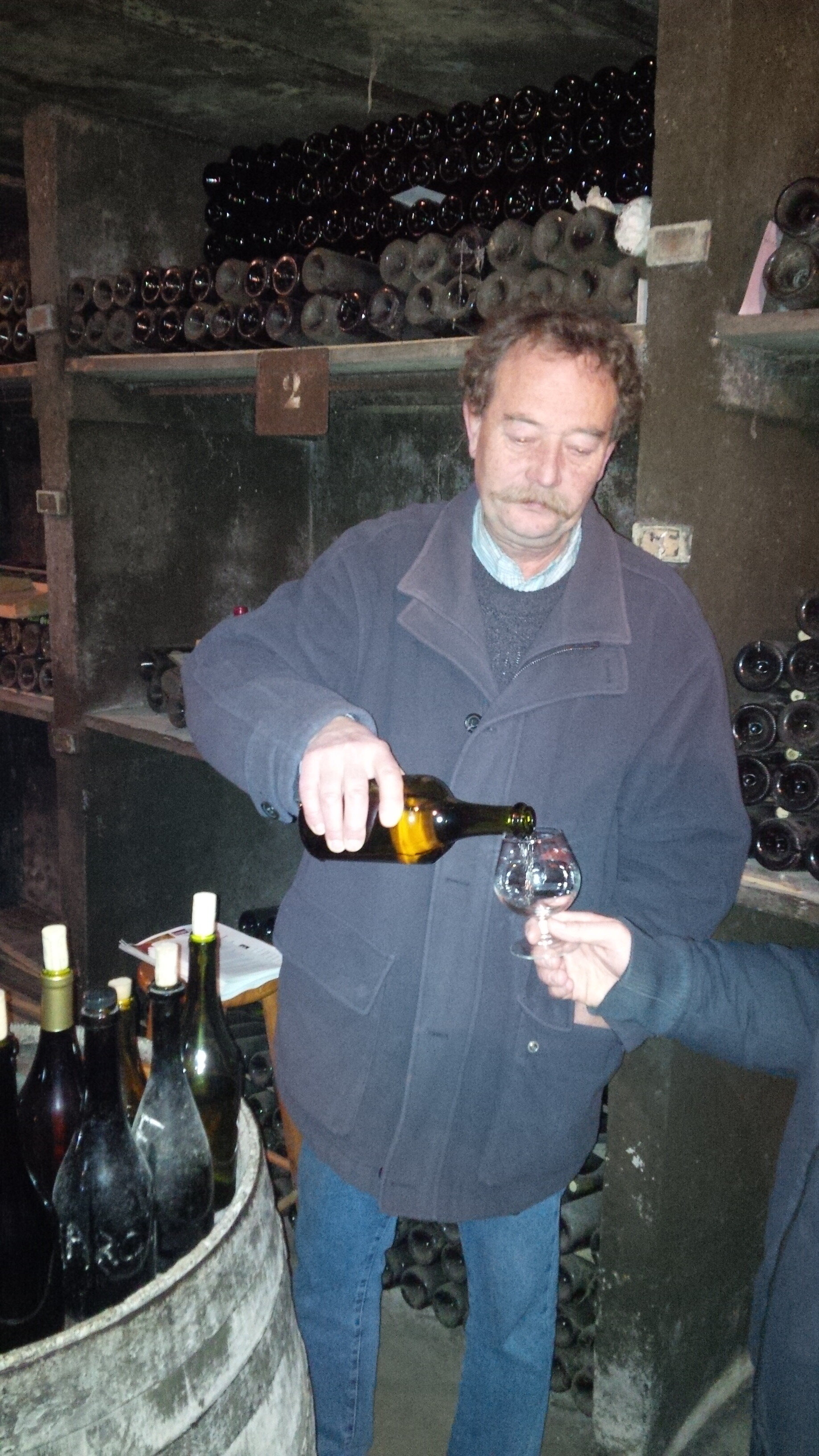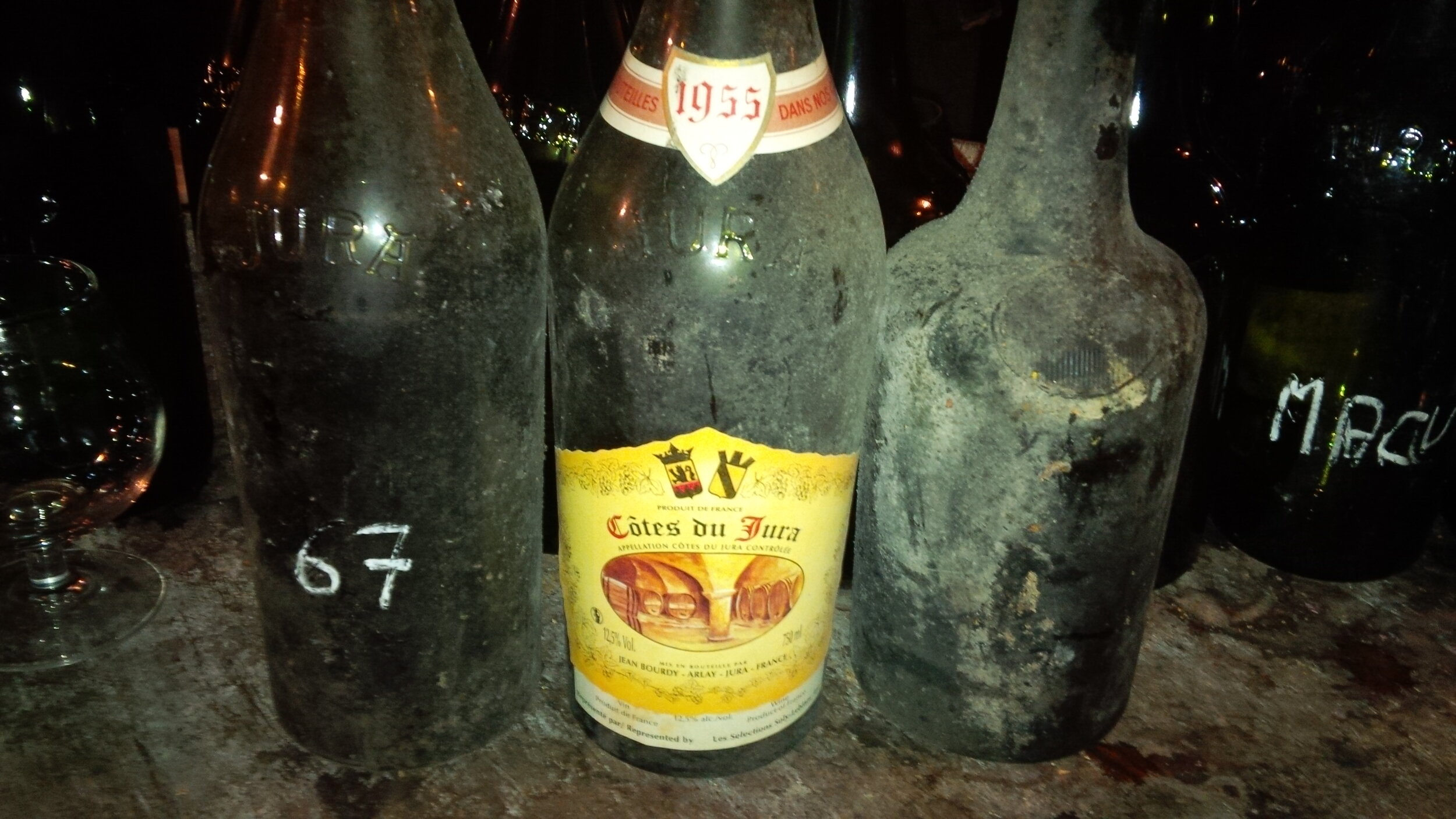The Beguiling Wines of Jean Bourdy, Jura
There are few places left in the world of wine that are producing something so traditional and natural as the Jura in France. When I visited a few years ago, we were all surprised at how insular the wine community is there, and how removed from the mainstream of French wine culture they are. Speaking with many producers and restaurateurs along our trip throughout France, few had much knowledge of Jura's wines outside of their famous Vin Jaune. Maybe because of the incredibly rustic profile of these wines, they never found their way into the favour of major critics or subsequently the mass market. But this incredibly authentic, quiet, almost back-woods enclave of France (about 60 min drive east from Beaune) is generally still producing their very unique style of wine the same way it was 500 and 1000 years ago.
Jean-Francois Bourdy in his family’s original cellar dating back to 1455.
Our visit was to Domaine Jean Bourdy, a benchmark producer in the Jura, and one of the 10 oldest family wineries in France. The Bourdy men have been making wine out of the same stone home and medieval cellar in the town of Arlay since 1475, and have back-vintages still available for sale from the 1700s! The main characteristic of Jura's winemaking is the intentionally oxidized vinification. Chardonnay and Savagnin are the white varieties grown here, but unless you're accustomed to Jura's vinification method, you might sooner think it's a glass of Sherry in front of you. There are some modern producers now producing a more contemporary style of Chardonnay that is very mineral driven and clean, but the majority adhere to the old school style. The reds are made the same way, but are an equal parts blend of Pinot Noir, Trousseau, and Poulsard. Equally blending the fruity, earthy, and structured components of each vareital. Then the wines age in large format 1000L foudre barrels for 4 years without topping up. When wine ages in oak it is always microxiding and a small percentage is always evaporating. This is called the angel's share. Most modern winemakers around the world try to avoid this by making sure the barrels are all filled right to the top every few weeks. This reduces the wines exposure to oxygen preserves the fresher fruit character that oxygen tends to deplete.
In Jura, they WANT this oxidation. They fill their 1000L barrels with Chardonnay and let them age without topping for 4 years on the Cotes du Jura, 7 years for the Vin Jaune. During this time they lose upwards of 30% of the juice to oxidation, but what they gain is an incredibly stable, age-worthy wine with a very unique character. This aging process is a little more akin to Sherry production in where a bacterial layer of yeast called "flor' develops on top of the wine, as a kind of thin microbial veil over the top of the wine that gives it's unique character and also protects the wine from total oxidation and spoilage into vinegar.
Jean-Francois Bourdy wanted to give us some context for how their wines are made, how they drink when released, and to show us first hand how ridiculously long they age. So we went into the original cellar of the Domaine, below their family home in the village of Arlay and tasted the current vintage of everything they produce, followed by an old back-vintage of each to provide some context.
We began with their 2008 Cotes du Jura Blanc, which is 100% Chardonnay and is their entry level white wine. But as the tasting would show, there is nothing entry level about this wine. The 2008 showed the typical Jura notes of funky sherry-like nuttiness, flor, pears, ripe apples with nice honied character and really zippy acidity. Such an interesting wine that drinks really smooth and fresh, but the nose is so interesting you don't want to stop smelling it! He followed this up with a 1955 of the same Cotes du Jura wine, 100% Chardonnay. To that point in my life, it was one of the oldest whites I've tasted, and I could never have guessed it was 59 years old! The acid and the fruit was still so vibrant, and had so much more life left, we would have guessed it was more like 10-20 years old.
Some back-vintage comparisons.
Jean-Francois then did the same experiment with the Cotes du Jura Red which is comprised of equal thirds of Pinot Noir, Poulsard, and Trousau. Tasting the current 2008 beside a 1967 was eye-opening and impressive that such a light wine, which even fresh out of barrel in 2008 is not massively tannic or overly acidic, yet still tastes vibrant from 1967. As a climax to an already impressive tasting Jean-Francois showed us the current Chateau Chalon Vin Jaune beside a 1937 Chateau Chalon. Bourdy's website has a good run down on Vin Jaune and Chateau Chalon for those who are unfamiliar. Earlier in the tasting he had mentioned they had recently sold their oldest bottle of wine to a private customer in the UK, a 1781 Vin Jaune. We thought it surely would be past its peak, just an expensive keepsake...now having tasted the 1937 which was still so fresh even at 77 years old, it was entirely possible to believe a 1781 wine from Bourdy would still be alive and well.
Long story short, these are some of the most natural, traditional, and authentic wines still being made on earth. The only real change they made was experimenting with chemical and fertilizer use (as everyone did) in the 1960’s to 1980s, then going back to organics. They then took it a step beyond, getting biodynamic certification in 2005, convinced this is the best, most natural way to make their wine while continuing tradition. At Lifford we usually carry the Cotes du Jura Blanc ($36.99 x12) and Cotes du Jura Rouge ($39.99 x12) full time, and we place special orders for their Vin Jaune, Chateau Chalon and other special wines. Reach out if you’re interested in more information!


